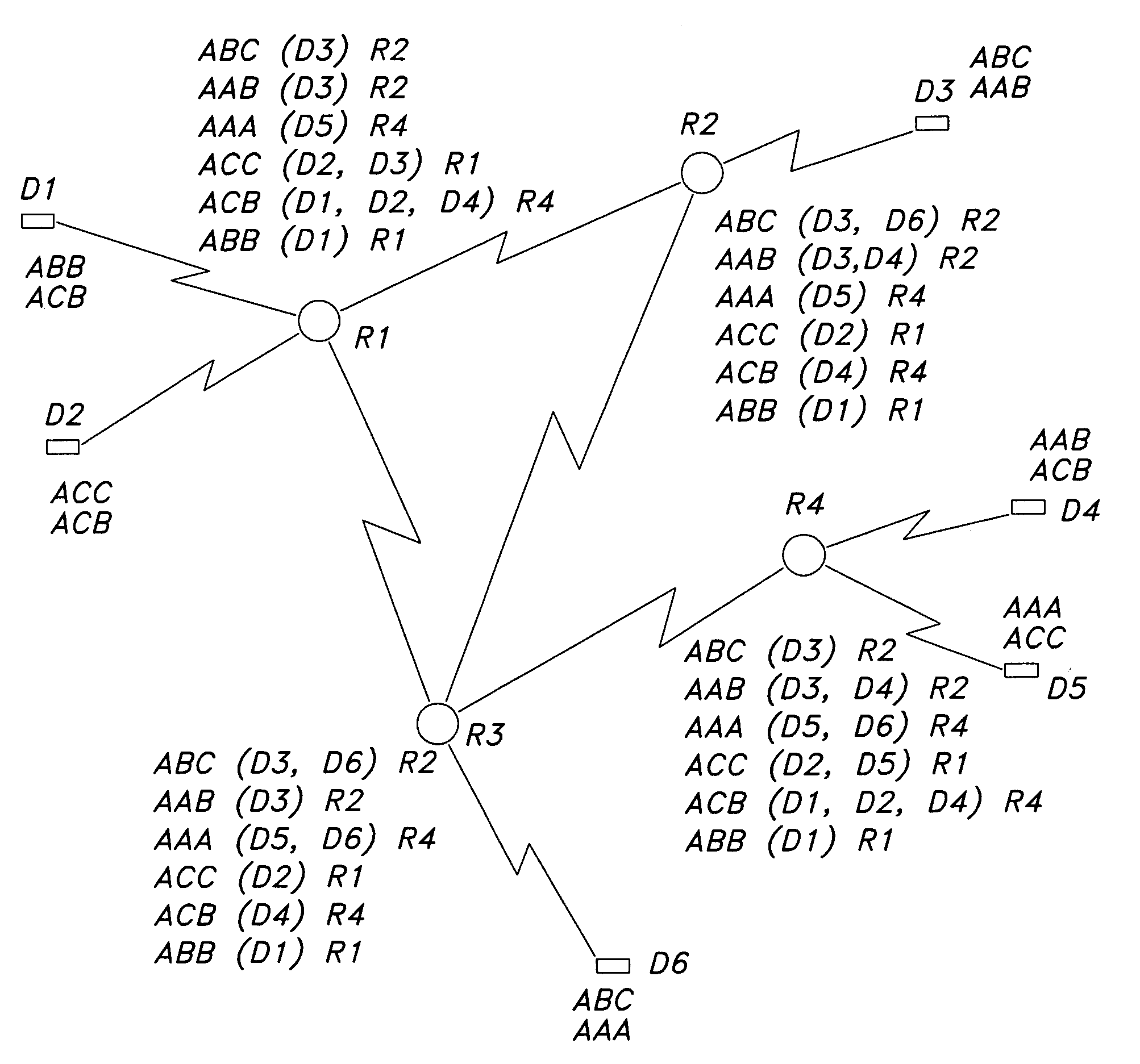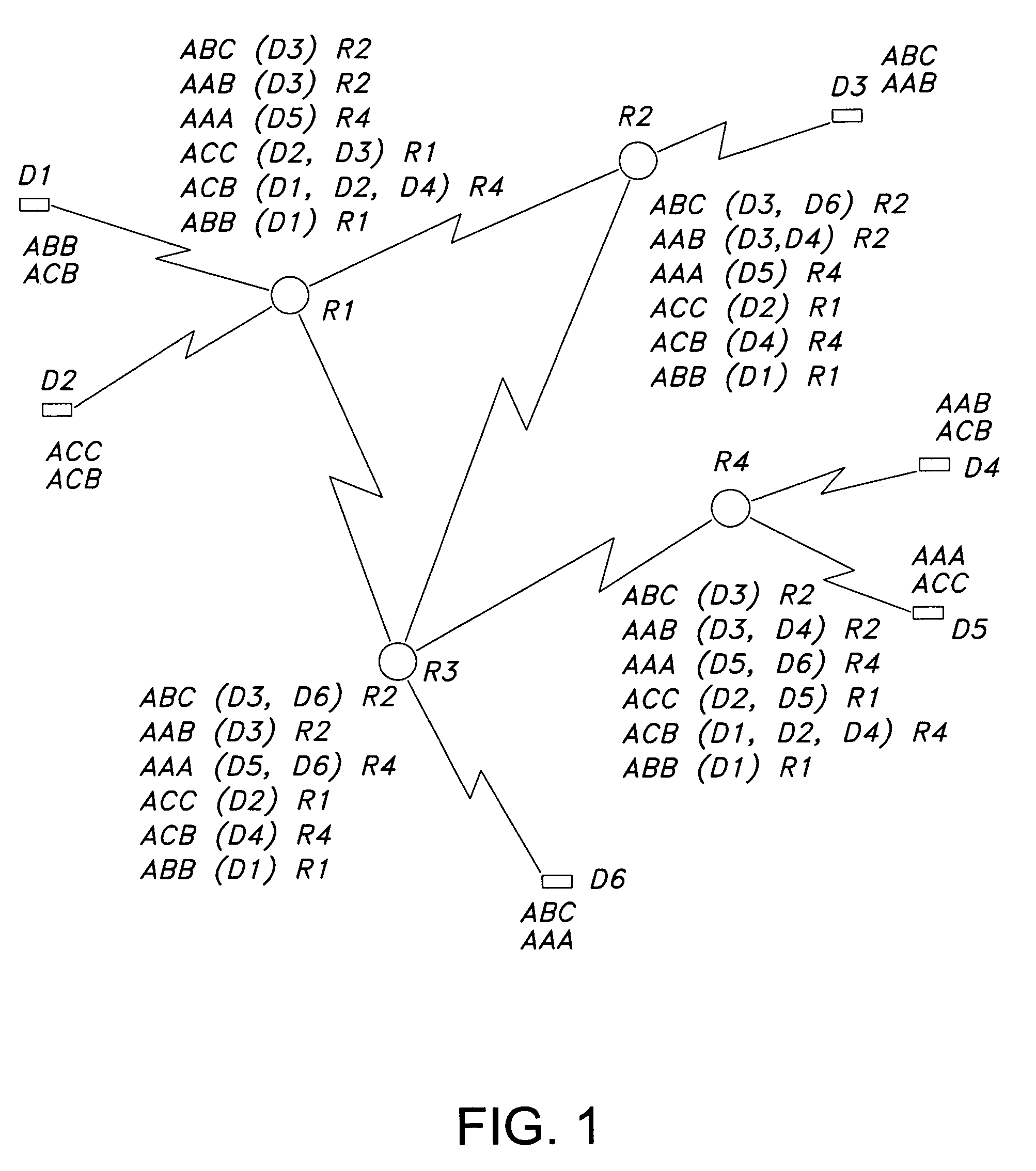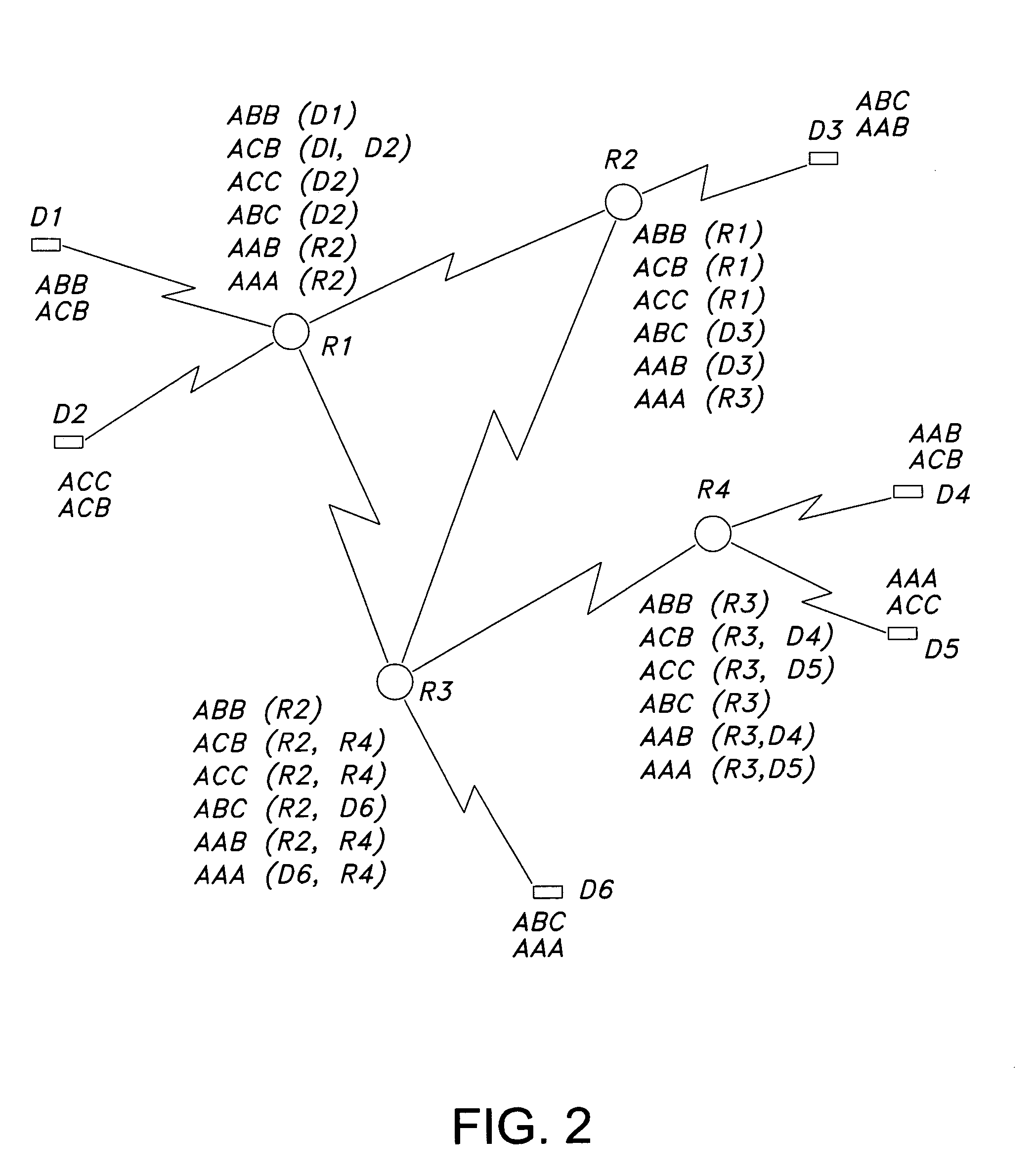Routing XML queries
a technology of xml queries and queries, applied in the field of routing xml queries, can solve the problems of ad hoc queries against this dynamic collection of heterogeneous databases, unable to receive timely answers, and difficult to identify relevant databases
- Summary
- Abstract
- Description
- Claims
- Application Information
AI Technical Summary
Benefits of technology
Problems solved by technology
Method used
Image
Examples
an example
[0069]Assume that routing state aggregation is employed in the coordinator protocol, in the example shown in FIG. 1. In particular, assume that router node R1, employs aggregates paths AAA, AAB to AA*. As a result, the associated list of path coordinators becomes R2, R4 and the associated list of data nodes, D3, Ds. A query AAB originates now at node D1, which forwards it to router R1. R1 examines its forwarding table and identifies a match at the aggregated entry, AA*. According to the protocol, R1 sends the query to data nodes D3, D5 and also forwards the message “QuerySent(AAB, {D3,D5}) to R2 and R4. D3 and D5 receive the query from R1, execute it locally and send the results back to R1, which in turn forwards them to D1. Notice that node D5 has no answers and returns an empty result. This is a case of a false positive, taking place due to aggregation at AA* in node R1. In the meantime, R2 and R4 receive the QuerySent message from R1. R4 responds an empty set since it is not actu...
PUM
 Login to View More
Login to View More Abstract
Description
Claims
Application Information
 Login to View More
Login to View More - R&D
- Intellectual Property
- Life Sciences
- Materials
- Tech Scout
- Unparalleled Data Quality
- Higher Quality Content
- 60% Fewer Hallucinations
Browse by: Latest US Patents, China's latest patents, Technical Efficacy Thesaurus, Application Domain, Technology Topic, Popular Technical Reports.
© 2025 PatSnap. All rights reserved.Legal|Privacy policy|Modern Slavery Act Transparency Statement|Sitemap|About US| Contact US: help@patsnap.com



